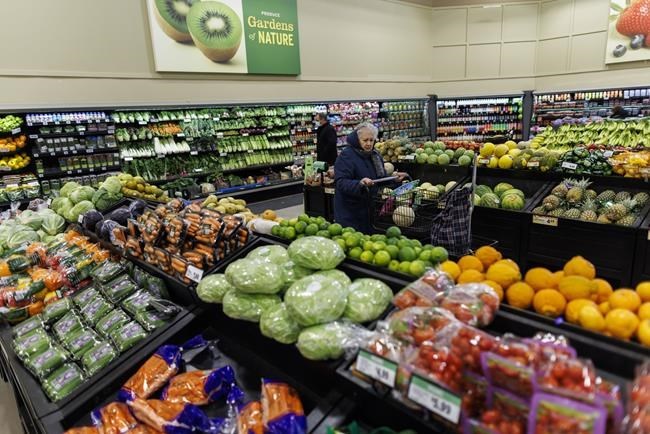Grocery inflation will fall below two per cent by the spring and stay roughly between one and two per cent for the rest of 2024, predicts a new report on the food and beverage industry.
Farm Credit Canada, an agricultural lending firm, said it expects food price increases beyond 2024 to stabilize around pre-pandemic levels as the pressures driving prices higher are easing.
The outlook for food and beverage manufacturers this year is more positive than last year, FCC said, though some sectors still face headwinds amid elevated interest rates and tighter household budgets.
"However, population growth and stabilizing — in some cases, falling — input costs are providing optimism for margin improvement for 2024."
The organization’s annual food and beverage report offers up forecasts for consumer spending, as well as specific food items such as sugar and flour.
Canada's annual inflation rate was 2.8 per cent in February, and grocery prices were one of the main factors pushing it lower. Grocery inflation was 2.4 per cent that month, down from 3.4 per cent in January as the cost of many items declined year over year.
However, slowing inflation doesn’t mean prices overall are dropping. Statistics Canada noted in its latest release that between February 2021 and February 2024, grocery prices rose 21.6 per cent.
As they grapple with higher prices, not just on food but on shelter and other daily costs, Canadians have been trying to cut back their spending on food and beverages, FCC said. They have been buying more items on sale, gravitating toward less expensive brands, buying more canned and frozen foods, shopping more at discount retailers and simply buying less food.
"Many consumers say the impact of high interest rates are just beginning to affect their spending," FCC said.
As shoppers have become more price sensitive, FCC said processors have been responding by modifying package sizing and substituting less expensive inputs.
Canadians have also been cutting back on alcohol, the report said. It forecasts a decline in alcohol sales and manufacturing volumes this year.
The report said some food products are expected to go down in price this year, such as flour, after a sharp increase over the last couple of years. This will translate to lower bakery and tortilla manufacturing selling prices by the end of the year.
Not so for sugar and cocoa. The sugar and confectionary manufacturing sector faces "significant headwinds," said FCC, due to problems with global production. Cocoa prices hit a high in 2023 not seen in 46 years and continue to accelerate.
Manufacturers in that sector will face pressure on their margins, said FCC, as companies will have to absorb some of these price increases because of tighter consumer budgets.
"Still, demand should remain relatively robust as research has shown consumers tend to treat themselves to smaller and lower-cost indulgences during difficult economic times," the report said.
The report offers up a relatively positive outlook for food and beverage manufacturers.
Many of the inputs that have been driving up costs at the manufacturing level, like fuel, transportation and packaging costs, have seen prices increase slower or even decrease, the report said.
That's why food and beverage sales are predicted to fall 1.4 per cent in 2024, but gross margins are expected to improve, said FCC.
"While this may seem counterintuitive, the reasons behind the outlook are simple. Much of the sales growth in the last three years has been fuelled by inflation as manufacturers aimed to pass on increases in input costs to the best of their ability to protect margins," it said.
This report by The Canadian Press was first published April 10, 2024.
The Canadian Press

